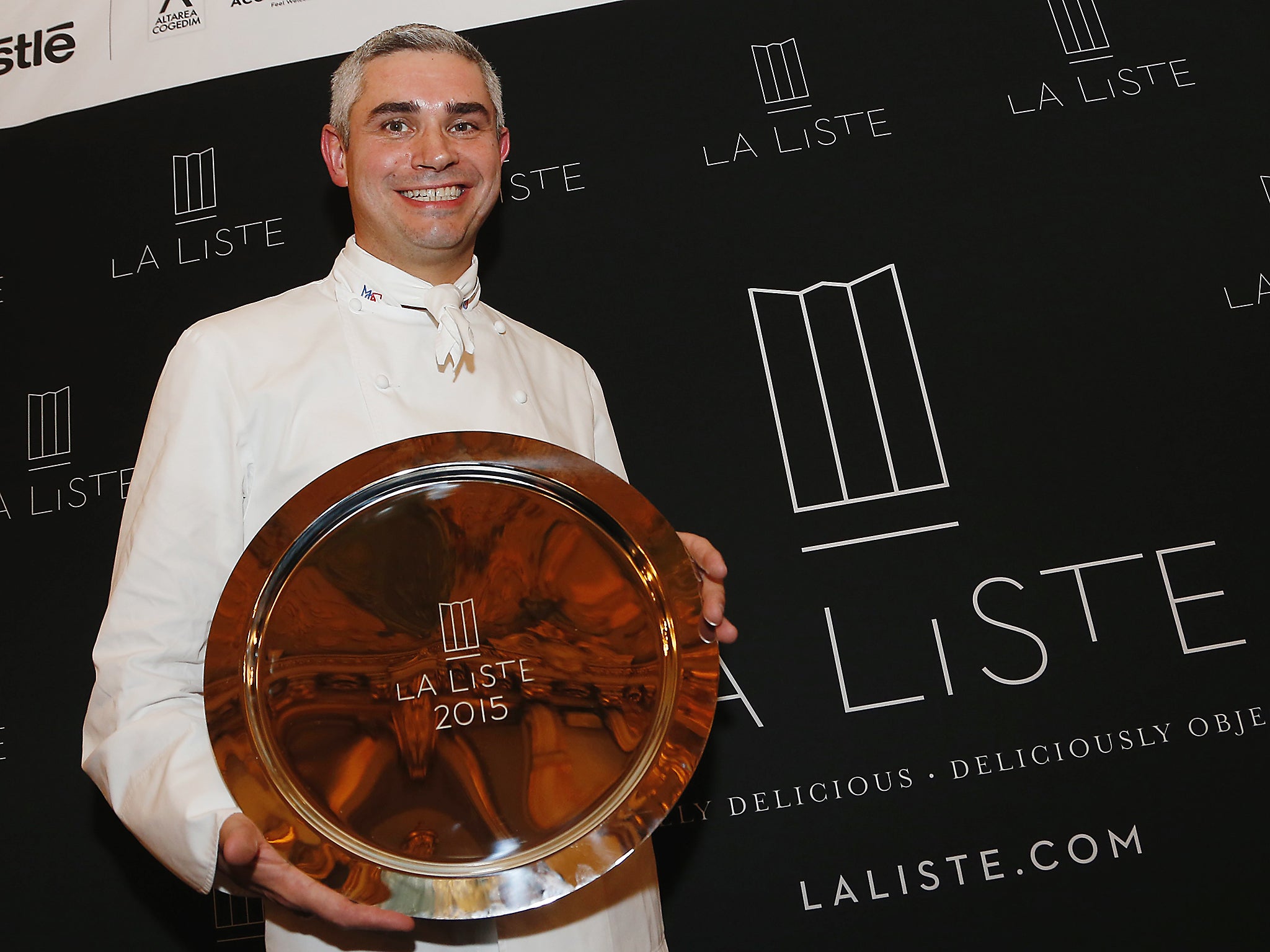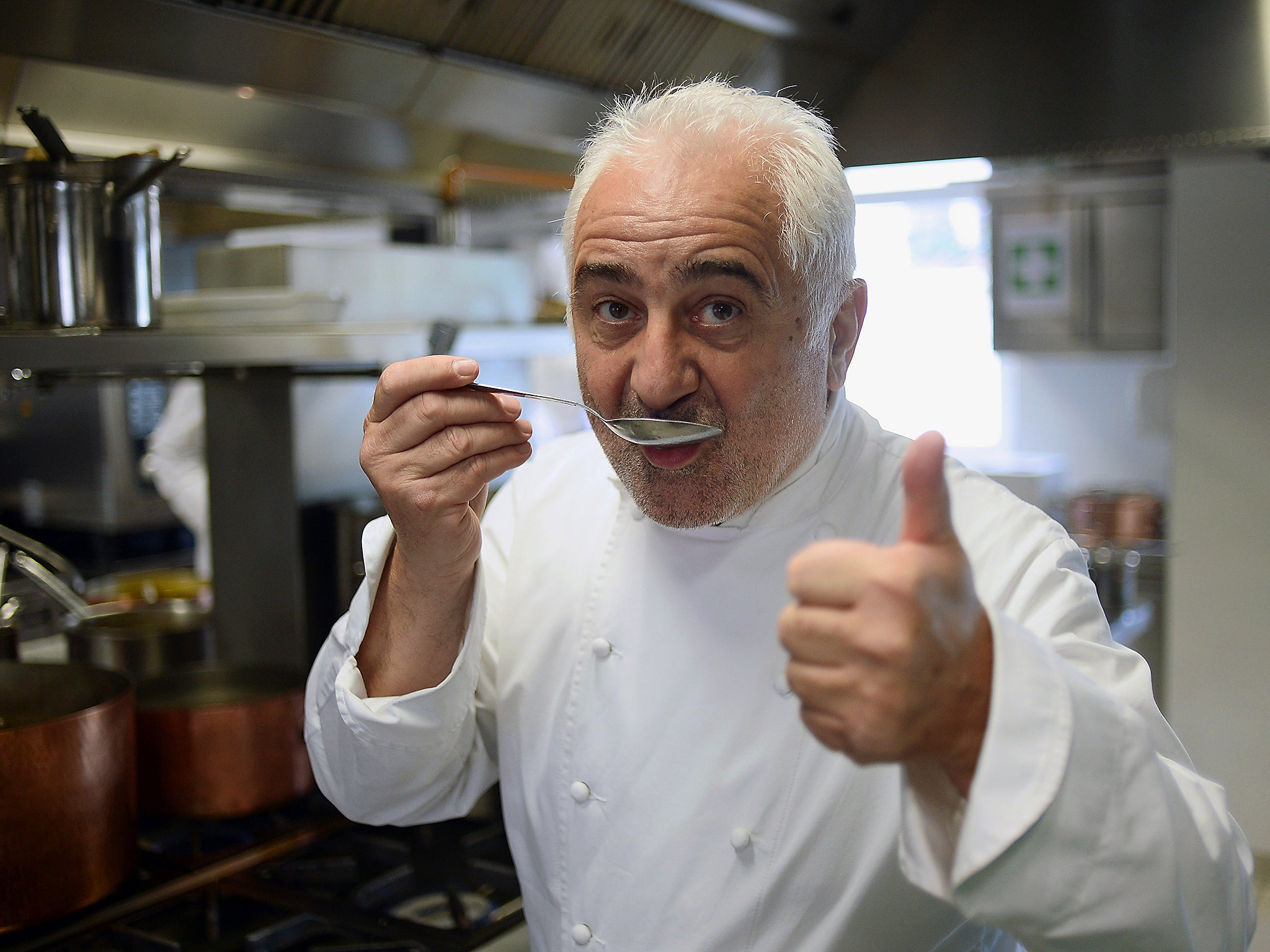La Liste: the French food guide propelled to fame after top chef's suicide
Months after winning the accolade of world's best restaurant, Benoît Violier took his own life, bringing on speculation over wine scams and pressure in the kitchen. Now the algorithm-based ranking service prepares for its second edition

The suicide of chef Benoît Violier, however tragic, had an unexpected effect on the fortunes of French restaurant guide La Liste, whose second edition launches next week. A beneficial effect. This time last year a beaming Violier was posing for photos with fellow restaurateurs and media in the gilded ballroom of 37 Quai D’Orsay, the French Ministry of Foreign Affairs. Flushed with bonhomie and vintage Moët & Chandon, I joined the queue for a quick congratulation, which Violier accepted graciously without the faintest idea who I was.
Violier, chef and proprietor of the Hotel de Ville in Crissier, Switzerland, had just received the award for the world’s best restaurant in the brand new listing. A month later, the 44-year-old chef and keen hunter was found dead, his rifle beside him. Suicide was the verdict, and remains so, though speculation continues to bubble privately: losses in a wine scam, an allegation denied by his wife and entourage and never substantiated; the pressure of staying at the top.
Comparisons are made with another top chef, Bernard Loiseau, who took his life in similar way 13 years earlier, after reports suggested he may lose his third Michelin star. Whatever, global press coverage of Violier’s death, suddenly describing him as the world’s top chef rather than simply a top chef, began to talk about La Liste.
As Philippe Faure, the founder of the guide, remarked, suddenly everyone was talking about his brainchild. Faure is President of Atout France, the state tourism entity, an ex-diplomat and businessman, whose CV includes both ownership of the Gault & Millau guide and tenure of the French embassies in Mexico City and Tokyo, where he once served couscous to an audience of curious Japanese guests. But La Liste is described erroneously as a French government initiative – it’s entirely financed by corporate sponsors such as San Pellegrino and Moët Hennessy. It does, however, spring from a French feeling that the national cuisine has been sidelined by superior, state-supported PR skill on the part of the Spanish, Scandinavians and Peruvians.
Next week, La Liste number two is launched with another glittering bash at the Quai D’Orsay. It remains to be seen whether its influence has grown or receded. This year the world’s top chef will be Guy Savoy, whose move to La Monnaie, the old Paris Mint overlooking the Seine, was one of the restaurant events of 2015. Savoy, on the phone from his kitchen on Thursday, was sanguine about the pressures of awards. “They’re important. My third Michelin star increased my turnover by 12 per cent straight away. But everybody reacts to pressure differently. I’ve learnt to live with it after 40 years.” Savoy is a jovial rugby fan, known for his personal enjoyment of good food, the antithesis of tortured kitchen intellectual or driven businessman.

If guide ranking is a pressure on ambitious chefs, La Liste in theory applies it only indirectly. The unique selling point of La Liste is that it surveys and aggregates other opinions rather than expressing its own. It works by surveying hundreds of book and online guides, press reviews, public evaluators of the TripAdvisor type, and much more, then converting their verdicts via an algorithm that applies numerous weightings, for reliability of source for example, to arrive at a figure. This year La Liste doesn’t rank the top 1,000 in order, but according to percentage marks, while a new feature comprises a further 9,000 restaurants, of more modest price, simply listed, with a new application that enables the user flying from, say, Turkey to Uzbekistan via Iran to look up and book restaurants in all three places between two tweets and a text.
La Liste does have an additional function, as snapshot of the changing world of catering. Though you need a bit of explanation from the creators to understand the nuances. The 2017 Liste contains considerably more establishments in China, for example. Why? Because, explains Jörg Zipprick, the food journalist and brains behind how the listings are constructed, there are a number of new Chinese restaurant guides to feed into the calculation. La Liste has no option but to reflect notable demotions and critiques. Last year’s number two, the American restaurant Per Se, is down due to an unusually severe review in the New York Times, while the rating of top Parisian chef Yannick Alléno has suffered in some degree due to online reaction to accusations of his kitchen bullying.
In one other respect La Liste stands out. It gives a good party, a touch staid perhaps by comparison with younger operations such as Le Fooding, less bling than the World’s 50 Best, but outclassing both in establishment grandeur. On Monday evening a couple of hundred guests will sit down to six courses, including Guy Savoy’s trademark soupe d’artichaut à la truffe, brioche feuilletée et beurre de truffe [truffled artichoke soup, flaky brioche and truffle butter]. Finished by Savoy himself in the Quai D’Orsay’s kitchens, which he says are as state of the art as any in Paris, and a lot busier.
Former foreign minister Laurent Fabius made these state premises available, as part of an initiative to boost gastro diplomacy. So what will become of the gastronomic offensive in April or May, if, as seems inevitable, the current French government disappears into history in the wake of President François Hollande. Unlikely to be any change, says Faure. Food policy is not high on anybody’s political agenda right now. For what it’s worth, the new presidential front runner François Fillon is supposed to be something of a gourmand anyway, with a weakness for the rillettes of his native Sarthe, considerable skills in boeuf bourguignon, and a Welsh wife whose cooking he jokingly disparages. If Fillon gets in, the kitchens of the Élysée and the Quai D’Orsay are probably safe. As for the other contender, Marine Le Pen, no one dares speculate, but there probably wouldn’t be a lot of room for Faure to serve couscous.
Join our commenting forum
Join thought-provoking conversations, follow other Independent readers and see their replies
Comments
Bookmark popover
Removed from bookmarks